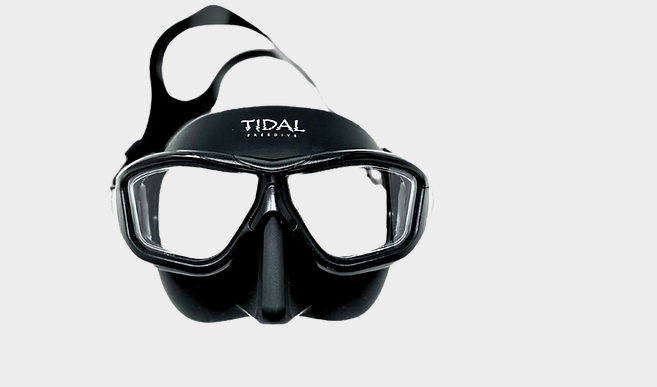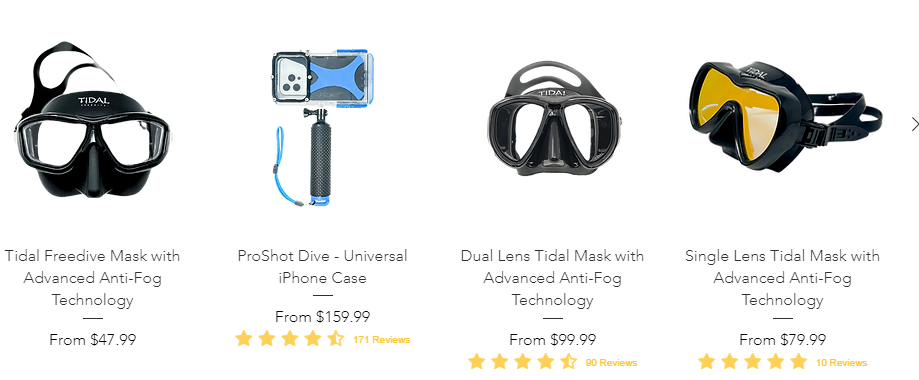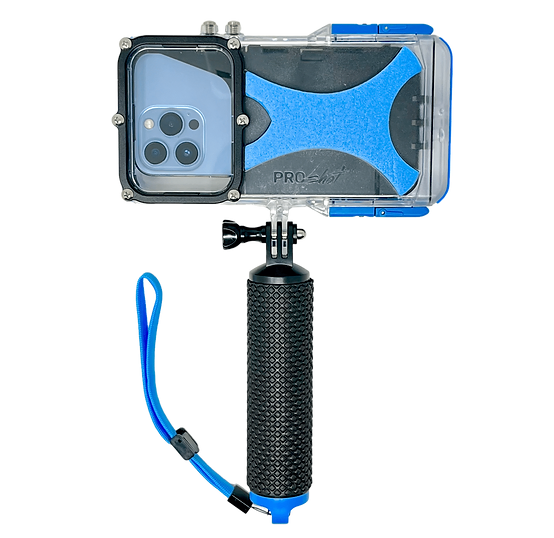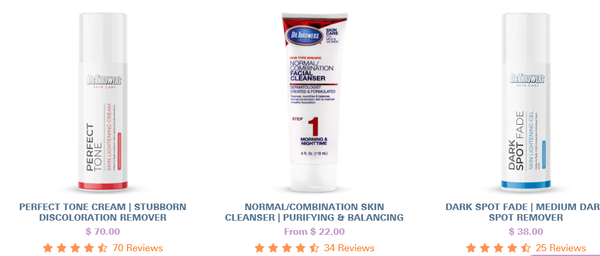Colin R. Davis once said.. ”the road to success and the road to failure are almost exactly the same". This enlightening viewpoint emphasizes the importance of perseverance, resilience, and learning from setbacks. Listen up, business owners! If you want to actually succeed in the evolving world of e-commerce, then you need a solid understanding of product creation, fulfillment techniques, and logistics.

Today, we explore the perspectives offered by ProShot Case founder Andrew Lud during a fascinating discussion with Meg. ProShot Case specializes in producing premium underwater phone cases for scuba divers and adventurers. Check out their amazing cutting-edge items by going to ProShot Case's website. Let’s delve into the key strategies and tips discussed with Andrew to help e-commerce businesses thrive.
Efficient Logistics: Warehousing Strategies, The Backbone of E-Commerce
Efficient logistics is crucial for e-commerce businesses to meet customer expectations and maintain profitability. “You know, there are a lot of factors to consider. I think some of the most important things to consider first are your location. So, you know, think about where are your customers, where are you shipping from, where are your products made, and also, you know, where is your headquarters located, these will all come into play when you try to figure out, you know, where you wanna ship to, where you want your fulfillment center to be, where you wanna store your products”, Andrew says. Navigating logistics involves selecting dependable shipping partners, and optimizing delivery processes. According to Andrew, another thing to consider is the cost. If you’re a small business owner who is just getting started, you need to figure out a reasonable storage price for an average warehouse. This meticulous approach ensures customers receive their orders promptly and in perfect condition.
Inventory Management: Keeping Stock in Check
When Meg asked Andrew about inventory management, and how his business can keep track of their stock effectively, he explained that there was an incident back in 2019 involving a third-party logistics provider, or 3PL. The provider had a software product meant to track all the orders that got shipped out and deduct them from inventory every time. They managed this for direct-to-consumer orders.
However, there were also B2B orders, whether shipping to fulfill Amazon or to a retail store. What they didn’t realize was that the software didn't work for connecting the B2B orders, it was such terrible timing, right before Christmas. So, they had to switch fulfillment companies. “Since then, um, we've also implemented what I call just sanity checks where we'd essentially keep tabs on our inventory on our own and then match it up with what our software says” Andrew says. He also looked at all of their sales by specific products over various time periods and the last couple of years to make decisions on how much he should produce at any given time. This strategy minimizes stock outs and overstock situations, ensuring a smooth supply chain.
Shipping: Choosing the Right Shipping Solutions
With so many shipping options out there, Meg asked Andrew how businesses can choose the right shipping strategy. Andrew stressed that over the years, there's been a lot of thought put into this question. Large companies typically create accounts with UPS, FedEx, or DHL, the big three in the industry. They get special rates if they handle a high volume of shipments through these companies. For an e-commerce business, getting significant discounts isn't likely right away, especially for startups or smaller businesses.
According to Andrew, the best strategy found to work effectively is to use some type of aggregator. For instance, a company like stamps.com provides both USPS and UPS labels at substantial discounts compared to what you'd get if you walked into the store to ship something yourself. They've negotiated rates with these companies, offering savings of 50 to 60% of the usual shipping costs.
Product Development: Innovate and Iterate

Developing products that resonate with customers is a continuous process. Here’s a brief dialogue between Meg and Andrew:
Meg: Let's move on to product development. That's your field. What should e-commerce businesses consider right, to ensure their products meet the market's demand and maintain quality?
Andrew: So there's obviously a lot that goes on in this question, so I will try to simplify it a little bit. But, you know, when we talk about product market strategy, this is always one of the most challenging things to do, but probably one of the most important, especially if you're about to invest in a product, launch a new company, whatever product you're thinking about, you should always spend a lot of time on figuring out whether you're doing the right thing. There are lots of ways to do this. When I was first starting out, I did a lot of surveys. I talked to a lot of people, and then I launched a Kickstarter campaign, which was another way to actually test the market. Yeah, we found that there was a lot of bias, and a lot of people just kind of saying what they'd think you'd want to hear if that makes sense.
Delving further into the conversation, Andrew believes that what worked best for them was launching a Kickstarter campaign, he believes it is essentially a way to get pre-orders for your product. He stressed that it is also important to test your advertising strategy, you can test your product idea in the actual market and get revenue for newer or wannabe entrepreneurs or product entrepreneurs. Andrew’s hands-on approach ensures the final product meets the highest standards.
Product Development Phase: Challenges Businesses Face
Andrew explains the challenges businesses often face during product development and how to overcome them. He highlights that product development can be especially difficult when creating complex products. “The product development phase like I said, is hard, especially if it's a complex product, you might design a great product, but then you talk to your manufacturers and they say it’s almost impossible to manufacture or far too expensive for you to ever make margins”, Andrew said.
One major challenge is designing a product that is feasible to manufacture and cost-effective, as sometimes manufacturers may find a great design almost impossible or too expensive to produce profitably. Andrew shares his experience with creating a waterproof case that had to meet high-quality standards to protect devices effectively. This process took him a year and a half, involving multiple prototypes and extensive testing. He emphasizes the importance of consulting with manufacturing experts or working closely with a manufacturer to ensure the design is manufacturable.
Additionally, Andrew points out that even if a product is manufactured correctly, issues can arise during assembly. Therefore, he advises continuous testing and quality control during assembly to catch any defects. Testing a sample of products from the assembly line helps ensure they meet the expected quality standards. The secret to success is maintaining quality control and fostering good connections with manufacturers. Andrew also emphasizes the value of clear communication, saying, "At your manufacturing site, you must have at least one English-speaking contact." This reduces miscommunication and guarantees smooth collaboration.
Advertising Strategies: Reaching the Right Audience
E-commerce businesses effectively need to advertise their products. With Andrew, we explored a few tips/strategies for advertising across platforms like Facebook, Google, and Amazon. Andrew highlights the value of advertising in their conversation with Meg, especially for e-commerce companies operating on sites like Amazon, Google, and Facebook. He said most firms require efficient advertising to draw in customers, in contrast to enterprises such as Tesla. When it comes to social media sites like Facebook, Instagram, and TikTok, Andrew advises targeting the correct audience with keyword matching techniques in order to reach prospective customers.
He emphasizes that video advertisements typically outperform static ones, particularly those with modest production values and good product explanations. According to Andrew, the platforms that offer the best returns on advertising spend (ROAS) differ; generally, Amazon has the greatest ROAs, followed by Google, Facebook, and Instagram. In summary, he emphasizes the importance of brief, captivating, and unambiguous advertising to increase sales. "If you think a picture is worth a thousand words, a video is worth a million”, Andrew emphasized.
To Wrap Up!
It takes a diverse approach to become proficient in product development, fulfillment, and e-commerce logistics. Pro Shot Case's Andrew Lud's insights emphasize the significance of smart inventory management, efficient transportation, and strategic advertising. These techniques can help e-commerce companies grow and provide great customer service. Visit ProShot Case to learn more about this amazing company and their goods.









